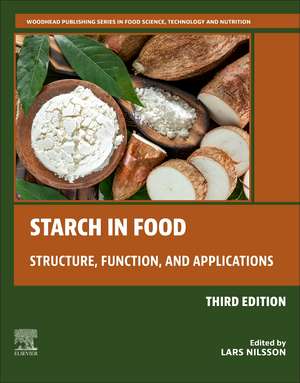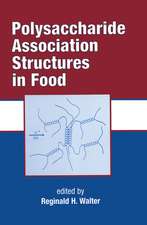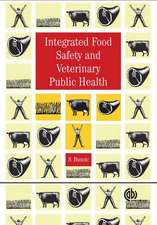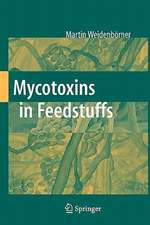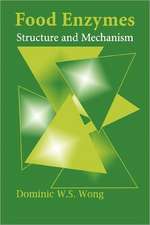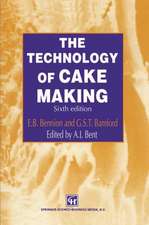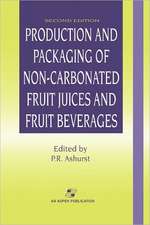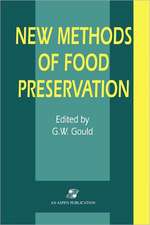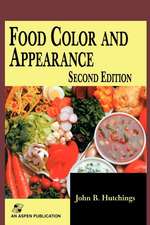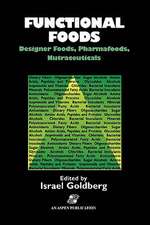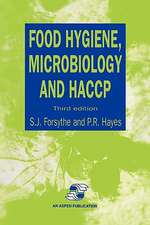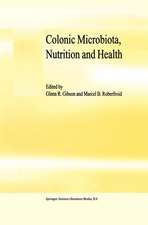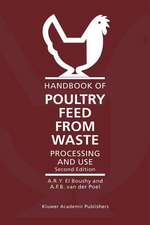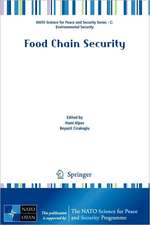Starch in Food: Structure, Function, and Applications
Editat de Lars Nilssonen Limba Engleză Paperback – 20 mai 2024
Starch selection is one of the most complex areas for a product developer, yet starch is key to solving formulation challenges when developing products to meet many of the emerging consumer trends. This book aids the end user on acquiring knowledge on fundamental starch aspects, such as granular and molecular structure and properties, analysis, biosynthesis and general functionality of starch in foods.
- Thoroughly revised edition bringing updated and new chapters covering the fundamentals of starch applications
- Explores starch aspects such as granular and molecular structure and properties, analysis, biosynthesis, and general functionality of starch in foods
- Offers insight into how starch-related formulation challenges can be addressed
Preț: 1576.10 lei
Preț vechi: 2058.91 lei
-23% Nou
Puncte Express: 2364
Preț estimativ în valută:
301.62€ • 327.52$ • 253.36£
301.62€ • 327.52$ • 253.36£
Carte tipărită la comandă
Livrare economică 15-29 aprilie
Preluare comenzi: 021 569.72.76
Specificații
ISBN-13: 9780323961028
ISBN-10: 0323961029
Pagini: 572
Dimensiuni: 216 x 276 mm
Greutate: 1.57 kg
Ediția:3
Editura: ELSEVIER SCIENCE
ISBN-10: 0323961029
Pagini: 572
Dimensiuni: 216 x 276 mm
Greutate: 1.57 kg
Ediția:3
Editura: ELSEVIER SCIENCE
Public țintă
Food Chemists, Technologists and researchers in nutrition within academia and industry.Researchers within general chemistry, chemical engineering, biotechnology, or similar, working with starch-related research topics, within academia and industry.Cuprins
Part one – Structure, analysis and modification
1. Plant starch synthesis
2. Analysis of starch molecular structure, molar mass and size
3. Understanding starch structure and functionality
4. Physical modification of starch
5. Chemical modification of starch
6. Starch interaction with native and added food components
7. Measuring starch in food
8. The relationship between structure and digestion of starch
9. The influence of plant cell wall properties on the bioaccesibility of starch
Part two – Sources of starch
10. Cereal starches
11. Rice flour and starch functionality
12. Potato starch
13. Root and tuber starches
14. Pseudo-cereal starches
15. Pulse starches
Part 3 - Applications
16. Utilizing starches in product development
17. Starch in baked products
18. Starch in gluten-free bread applications
19. Starch in brewing applications
20. Starch-based microencapsulation
21. Encapsulation of probiotic bacteria using starch microspheres produced by polymer phase separation
22. Starch nanoparticles
23. Starch-based food emulsifiers
24. Starch-based films
1. Plant starch synthesis
2. Analysis of starch molecular structure, molar mass and size
3. Understanding starch structure and functionality
4. Physical modification of starch
5. Chemical modification of starch
6. Starch interaction with native and added food components
7. Measuring starch in food
8. The relationship between structure and digestion of starch
9. The influence of plant cell wall properties on the bioaccesibility of starch
Part two – Sources of starch
10. Cereal starches
11. Rice flour and starch functionality
12. Potato starch
13. Root and tuber starches
14. Pseudo-cereal starches
15. Pulse starches
Part 3 - Applications
16. Utilizing starches in product development
17. Starch in baked products
18. Starch in gluten-free bread applications
19. Starch in brewing applications
20. Starch-based microencapsulation
21. Encapsulation of probiotic bacteria using starch microspheres produced by polymer phase separation
22. Starch nanoparticles
23. Starch-based food emulsifiers
24. Starch-based films
